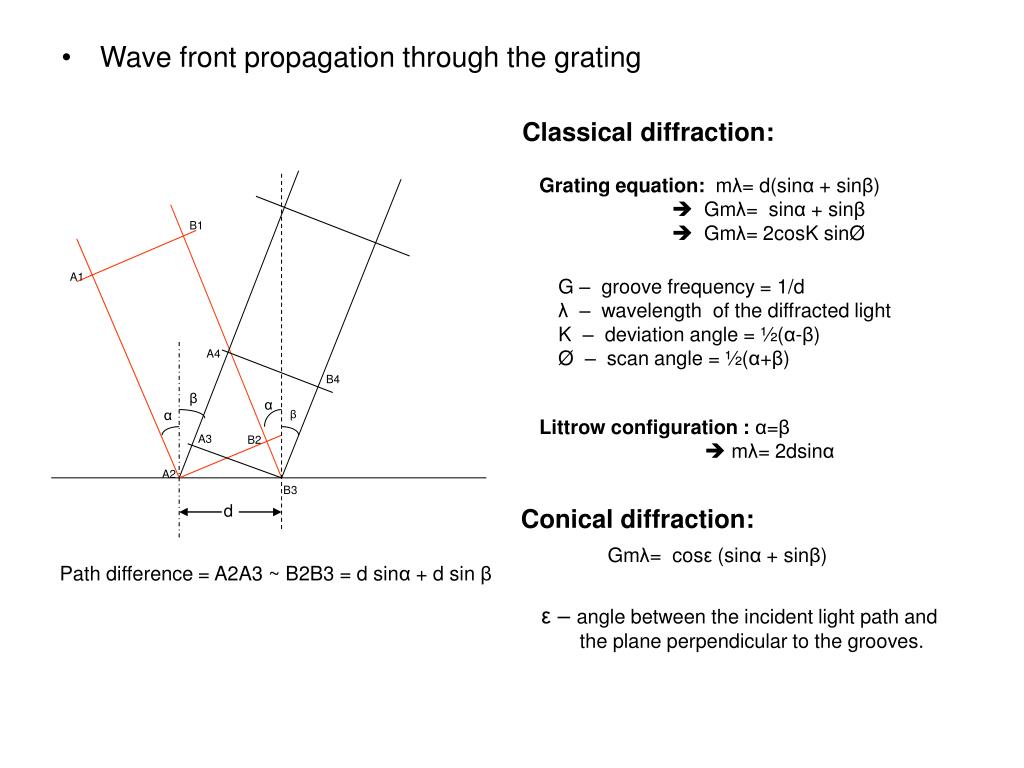


Such a grating modulates the amplitude of an incident wave on it to create a diffraction pattern. įor typical applications, a reflective grating has ridges or rulings on its surface while a transmissive grating has transmissive or hollow slits on its surface. Because of this, diffraction gratings are commonly used in monochromators and spectrometers, but other applications are also possible such as optical encoders for high precision motion control and wavefront measurement. The grating acts as a dispersive element. The directions or diffraction angles of these beams depend on the wave (light) incident angle to the diffraction grating, the spacing or distance between adjacent diffracting elements (e.g., parallel slits for a transmission grating) on the grating, and the wavelength of the incident light. The emerging coloration is a form of structural coloration. In optics, a diffraction grating is an optical component with a periodic structure that diffracts light into several beams travelling in different directions (i.e., different diffraction angles).

An incandescent light bulb viewed through a diffractive effects filter.


 0 kommentar(er)
0 kommentar(er)
